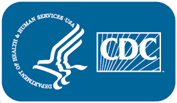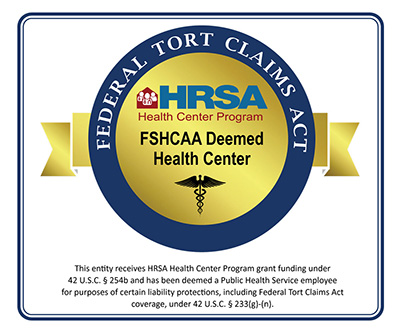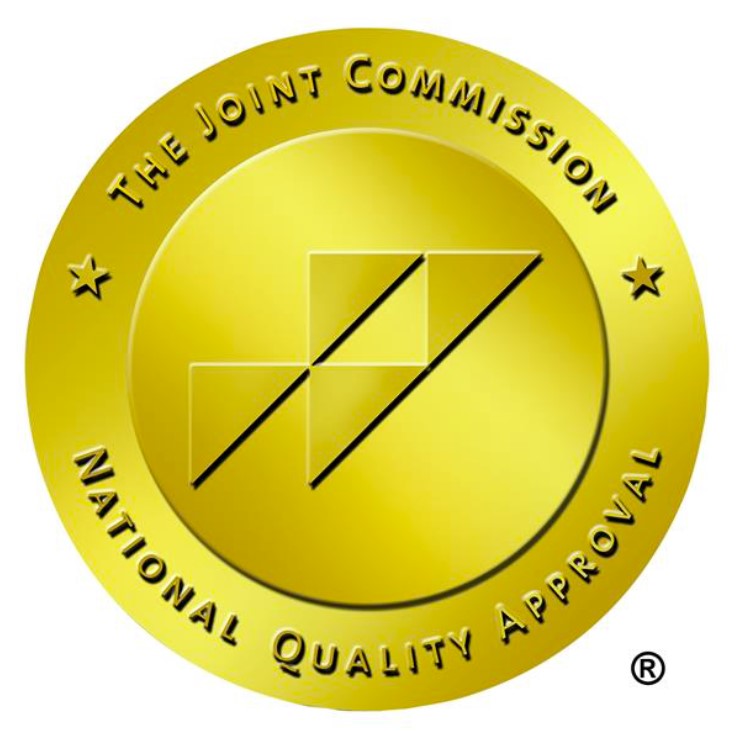
For the complete article from the CDC, visit http://www.cdc.gov/vhf/ebola/transmission/human-transmission.html.
Introduction
Ebola virus causes severe viral hemorrhagic fever with a high fatality rate. Five Ebola virus species within the genus Ebolavirus are known, including four that cause Ebola virus disease (EVD) in humans (a fifth species has only caused disease in nonhuman primates).1 The 2014 outbreak of EVD in West Africa, caused by Ebola virus (Zaire ebolavirus species), is the largest outbreak of EVD in history.2 Ebola virus can be transmitted by direct contact with blood, body fluids, or skin of EVD patients or persons who have died of EVD.3 By October 8, 2014, 401 healthcare personnel in West Africa had become infected with Ebola, of whom 232 died.2,4 Several U.S. healthcare personnel working in West Africa have also become infected with EVD and have returned to the United States for evaluation and treatment.5 In addition, people in several states who have had recent travel to West Africa and have developed fever and other symptoms have been evaluated at U.S. hospitals for possible EVD, and as of October 6, 2014 one patient, a traveler from Liberia who was visiting Texas, was diagnosed with EVD and died. On October 10, a healthcare worker at Texas Presbyterian Hospital who provided care for the index patient reported a low-grade fever and was referred for testing. The healthcare worker has tested positive for Ebola according to preliminary tests by the Texas Department of State Health Services’ laboratory. The healthcare worker was isolated after the initial report of a fever. CDC confirms that the healthcare worker is positive for Ebola [CDC, unpublished epidemiologic data].
Evidence Summary
Evidence and understanding of Ebola virus transmission is based on epidemiologic and laboratory data, summarized below, including investigations of >20 African outbreaks since 1976.6
Epidemiologic Data
Human outbreaks of EVD are hypothesized to begin through direct contact with an infected animal or its body fluids, and human transmission chains are driven by direct contact with the blood or other body fluids of infected patients.3,7-13 Ebola virus RNA levels in the blood increase logarithmically during the acute phase of illness (Figure 1) 14 and significant numbers of EVD patients have vomiting (67.6%), diarrhea (65.6%) and unexplained bleeding (18% and generally late in the course of disease)2 presenting opportunities for EVD transmission. Persons who have direct contact with infected individuals or their blood and body fluids, such as healthcare personnel without access to appropriate personal protective equipment or other caregivers in hospitals or homes, and persons handling bodies of deceased EVD patients are at high risk for Ebola virus exposure and infection.3 Ebola virus RNA levels in the blood in patients who died are also on average 2 log10 higher than RNA copy levels in patients who survived.14
During an Ebola outbreak in 1995 in Kikwit, Democratic Republic of the Congo, 28 (16%) of the 173 household contacts of 27 primary Ebola cases developed EVD.3 All 28 secondary cases involved direct physical contact with a known EVD patient; overall, 28 of 95 family members who had direct contact with a primary case became infected, whereas none of 78 family members who did not report direct contact became infected. Other studies have reported similar findings, in that all or the large majority of secondary transmissions involved direct physical contact with known EVD patients.7,10,12Several investigations have also demonstrated that persons residing in confined, shared spaces (e.g., homes), but who had no direct physical contact with these cases did not develop EVD.3,10 In the 1995 Ebola outbreak in Kikwit, among those with direct contact, exposure to body fluids conferred additional risk (relative risk = 3.6) consistent with the importance of direct contact with the blood or other body fluids of infected patients in propagating EVD transmission.3 After adjusting for direct contact and exposure to body fluids, adult family members who touched a deceased EVD patient (relative risk = 2.1) and who were exposed during the late hospital phase were at additional risk.3
The risk of EVD transmission from direct skin contact with an EVD patient is lower than the risk from exposure to blood or body fluids and may be more likely in severe illness (when the Ebola virus RNA levels are highest). It is not known if transmission from direct skin contact is mediated by Ebola virus primarily on the skin where it has been documented by histopathology15 and RT-PCR of a skin swab16 or by micro-contamination of the skin with blood or other body fluids. Indirect exposure to blood and body fluids (via fomites) has also been implicated in EVD transmission but is not common. In the 2000 – 2001 Ebola outbreak in Gulu, Uganda, one EVD patient had no direct exposure to another known EVD patient; this patient slept with a blanket that had been used by another patient who died of EVD.12 Another study evaluated 31 environmental specimens from an Ebola isolation ward that were not visibly bloody. By RT-PCR, all specimens were negative suggesting that fomites in a clinical setting (where cleaning and decontamination would be frequent) are unlikely to be capable of EVD transmission.16
Figure 1. Ebola virus RNA copy levels in sera over time from 45 Ebola Virus Disease (EVD) patients (27 fatal, 18 non-fatal)14

Each bar represents the arithmetic mean value, and the error bars represent 1 standard error of the mean for each time point.
Figure 3A from Towner JS et al. J. Virol. 2004, 78(8):4330. DOI:10.1128/JVI.78.8.4330-4341.2004.
Laboratory Data
Ebola virus is usually detectable in patients’ blood at the time of fever and symptom onset,17 although Ebola virus RNA levels at the time of fever and symptom onset are typically low (near the detection threshold limits) and in some patients may not be reliably detectable during the first 3 days of illness (Figure 1).14 Ebola virus RNA levels in the blood have been shown to increase logarithmically during the acute phase of illness14 and the bodies of deceased Ebola-infected persons are highly infectious.3 Among patients who survive, the Ebola virus RNA levels in the blood decrease during clinical recovery.14Ebola virus has also been detected in other body fluids (Table 1), in addition to blood, from acute and convalescent EVD patients. In one study involving both the acute and convalescent phases of illness, Ebola virus RNA was detected from patients’ saliva, skin (swab of the hand), breast milk, stool, tears (conjunctival swab), and seminal fluid, but not urine (5 patients), vomit (1 patient), sputum (1 patient), or sweat (1 patient).16 In a different study that focused on the convalescent phase of illness, Ebola virus was detected from vaginal, rectal, conjunctival swabs and seminal fluid of 1 or more EVD patients by RT-PCR, but not in urine or saliva.18 In another study involving 28 convalescent EVD patients, all specimens other than semen that were obtained between 12 and 157 days after symptom onset were negative by viral culture and by a viral antigen assay including 85 specimens of tears, 84 of sweat, 79 of feces, 95 of urine, 86 of saliva, and 44 of vaginal secretions.19 The eight convalescent specimens of semen were also negative by viral culture and by a viral antigen assay, but Ebola virus was detected by RT-PCR in six of these eight semen specimens.19
The maximum recorded persistence of Ebola virus RNA in the blood and other body fluids of convalescent EVD patients varies by fluid type. Across combined studies (each study did not examine the exact same fluid types at the same time points), Ebola virus RNA has been detected up to 101 days after symptom onset in semen, 33 days from vaginal swabs, 29 days from rectal, 23 days from urine, 22 days from conjunctival swabs, 21 days in blood, 15 days in breast milk, eight days in saliva, and six days on skin (Table 1).16,18–20 Given the relatively small number of patients in these persistence studies, durations may not represent the longest that Ebola virus can persist in the blood and body fluids of individual EVD patients. Though Ebola virus has been detected in breast milk, that information is based on a single patient16 and there is not enough information to provide guidance about the amount of time after illness onset at which it is safe for infants to resume breastfeeding. Though multiple studies have shown that Ebola virus can persist in semen for longer than in blood or other body fluids,16,18,19 sexual transmission of Ebola has not been definitively established.
Table 1. Ebola virus detection by reverse-transcription polymerase chain reaction (RT-PCR) in body fluids collected from EVD patients during an outbreak in Gulu, Uganda14 and the maximum described persistence after symptom onset described in the literature16,18-20
| Body Fluid | Acute phase of illness number detected/number tested (percent) |
Convalescent phase of illness number detected/number tested (percent) |
Last day detected after symptom onset described in the literature | Comments |
|---|---|---|---|---|
| Skin | 1/8 (13%) | 0/4 (0%) | 6 | |
| Saliva | 8/12 (67%) | 0/4 (0%) | 8 | |
| Urine | 0/7 (0%) | 0/4 (0%) | 23 | Ebola virus antigen has been detected in the urine in other studies20 |
| Stool / Feces | 2/4 (50%) | n/d | 29 | |
| Breast milk | 1/1 (100%) | 1/1 (100%) | 15 | Ebola infects circulating macrophages which are present in breast milk16 |
| Semen | n/d | 1/2 (50%) | 101 | Sexual transmission of Marburg virus (but not Ebola virus) has been described36 |
| Vaginal fluid | n/d | n/d | 33 |
n/d = not done on specimens from the EVD outbreak in Gulu, Uganda
Transmission among Healthcare Personnel and Patients
A substantial number of healthcare personnel have acquired EVD in the 2014 outbreak in West Africa2 and investigations to understand risk factors for transmission are ongoing. There have been reports that healthcare personnel have not had access to adequate personal protective equipment.21 During the 1995 Ebola outbreak in Kikwit, Democratic Republic of Congo, 80 (25%) of the 315 case-patients were healthcare personnel, and all of the healthcare personnel who developed EVD had provided care to EVD patients without appropriate contact precautions.22 In that outbreak, only one additional healthcare provider developed EVD after the hospital initiated barrier nursing precautions (this provider reported inadvertently rubbing her eyes with soiled gloves).22 During the 2007–2008 Ebola outbreak in Bundibugyo district, western Uganda, 14 healthcare personnel were infected before implementation of standard precautions and barrier nursing; none became infected after implementation of these precautions.13 Few EVD patients have been treated in hospitals outside of Central and West Africa. In 1996, an unrecognized case of EVD was treated in a hospital in Johannesburg, South Africa for two weeks.20 One healthcare provider who assisted with placement of a central line in the patient developed EVD and died. The authors speculated that the provider may have had a percutaneous exposure as symptoms developed three days after the central line was placed. Unfortunately, by the time EVD was diagnosed, the healthcare provider was critically ill and could no longer be interviewed regarding potential exposures. More than 300 other healthcare personnel had exposure to either the initial patient or the infected healthcare provider and none developed EVD, suggesting that standard precautions alone may have considerably reduced the risk of nosocomial transmission.20 In the U.S. and Western Europe, several patients have been cared for with Marburg virus (a filovirus closely related to Ebola that also causes viral hemorrhagic fever).23,24 Before the diagnosis of Marburg virus infection and implementation of precautions, hundreds of healthcare personnel had potentially been exposed to these patients, but no nosocomial transmission occurred.23,24 Although these experiences are reassuring, EVD is highly transmissible in healthcare setting especially with severely ill patients and patients who have died. On October 6, 2014, Spanish authorities announced that an auxiliary nurse was diagnosed with EVD after caring for an EVD patient (who died) in a Spanish hospital.25 An investigation is ongoing to determine exactly how the nurse was exposed to EVD and to learn how this type of exposure can be prevented. Finally, in healthcare settings, human-to-human transmission of Ebola has also been demonstrated with unsafe injection practices26(e.g., re-use of needles) and percutaneous exposures (e.g., needlesticks)27. There have not been studies to evaluate the risk of Ebola transmission during the performance of aerosol-generating medical procedures (e.g., intubation, bronchoscopy).
Transmission Studies
Airborne transmission of Ebola virus has been hypothesized but not demonstrated in humans. While Ebola virus can be spread through airborne particles under experimental conditions in animals, this type of spread has not been documented during human EVD outbreaks in settings such as hospitals or households.1 In the laboratory setting, non-human primates with their heads placed in closed hoods have been exposed to and infected by nebulized aerosols of Ebola virus.28,29 In a different experiment, control monkeys were placed in cages 3 meters away from the cages of monkeys that were intramuscularly inoculated with Ebola virus.30 Control and inoculated monkeys both developed Ebola virus infection. The authors concluded that “fomite and contact droplet” transmission to the control monkeys was unlikely, and that airborne transmission was most likely,30 but they did not discuss the potential behaviors of caged non-human primates (e.g., spitting and throwing feces) that might have led to body fluid exposures.31 Similarly, an outbreak of Reston virus (Reston ebolavirus species, which does not cause EVD in humans) infection occurred in a quarantine facility housing non-human primates in separate cages and the transmission route could not be confirmed for all infected primates. Multiple animal handlers developed antibody responses to Reston virus suggesting asymptomatic infection was occurring in humans with direct animal contact and implicating animal handling practices in transmission between primates.32 In a different study, piglets that were oronasally inoculated with Ebola virus were able to transmit infection to caged non-human primates that were placed 20 cm from the piglets.33 The piglet and primate cubicle design did not permit the investigators to distinguish among aerosol, small or large droplet, or fomite transmission routes, and it was noted that pigs are capable of generating infectious short range aerosol droplets more efficiently than other species. A more recent experiment that was specifically designed to further evaluate the possibility of naturally-occurring airborne transmission of Ebola virus among non-human primates showed no transmission of Ebola virus from infected to control primates placed 0.3 meters apart in separate open-barred cages and ambient air conditions, but with a plexiglass divider that prevented direct contact between the animals.34
In outbreak investigations, some EVD patients have not reported contact with another EVD patient, leading to speculation regarding transmission via aerosolized virus particles. In the Kikwit outbreak, 12 (3.8%) of 316 EVD patients did not report high-risk contact with a known EVD patient.7 EVD was not laboratory-confirmed in any of these 12 patients, however, and exposure histories for 10 of the 12 patients were provided by surrogates (because the 10 patients died before they could be interviewed); direct contact with EVD patients could have been missed because of wording of the study instrument, and transmission via droplets or fomites were also not ruled out. All 74 patients with EVD confirmed by RT-PCR testing or an Ebola antibody or antigen detection assay in this outbreak had high-risk exposures to Ebola patients.7 Similarly, in the 2007-2008 Uganda outbreak, although some probable (not virologically-confirmed) cases did not have a reported contact exposure, all 42 laboratory-confirmed cases had contact with a known EVD case.13 Also, in a separate analysis of the Kikwit outbreak, the presence of cough (19% of primary cases within households) did not predict secondary spread of EVD.3
2014 EVD Outbreak
Most of the evidence regarding human-to-human transmission of Ebola virus is derived from investigations of previous Ebola outbreaks. Although the current EVD epidemic in West Africa is unprecedented in scale, the clinical course of infection (i.e., incubation period, duration of illness, case fatality rate) and the transmissibility of the virus (i.e., estimations of the basic reproductive number [R0]) are similar to those in earlier EVD outbreaks.2 In addition, genetic analyses of 99 Ebola virus genomes sequenced from 78 patients from the 2014 outbreak in Sierra Leone35 suggest that the 2014 EVD outbreak strains are very closely related to viral strains from the two most recent Ebola outbreaks in Central Africa.35 As has been observed in previous Ebola outbreaks, the genomic sequences from the 2014 EVD outbreak have a small number of distinct genetic changes, but it is not known if these changes have an impact on disease severity or transmissibility.35
Summary
EVD among healthcare personnel and other persons is associated with direct contact with infected persons (or the bodies of persons who have died from EVD) and direct contact with body fluids from EVD patients. CDC infection control recommendations for U.S. hospitals, including recommendations for standard, contact, and droplet precautions for general care, reflect the established routes for human-to-human transmission of EVD and are based on data collected from previous EVD outbreaks in Africa in addition to experimental data. Airborne transmission of EVD among humans has never been demonstrated in investigations that have described human-to-human transmission although hypothetical concerns about airborne transmission of EVD have been raised.3,10
References
- U.S. Centers for Disease Control and Prevention. Ebola Hemorrhagic Fever Information Packet. 2009; Ebola Factsheet Accessed Sep 17, 2014.
- Team WHOER. Ebola Virus Disease in West Africa – The First 9 Months of the Epidemic and Forward Projections. The New England Journal of Medicine. Sep 22 2014.
- Dowell SF, Mukunu R, Ksiazek TG, Khan AS, Rollin PE, Peters CJ. Transmission of Ebola hemorrhagic fever: a study of risk factors in family members, Kikwit, Democratic Republic of the Congo, 1995. Commission de Lutte contre les Epidemies a Kikwit. The Journal of Infectious Diseases. Feb 1999;179 Suppl 1:S87-91.
- WHO: Ebola Response Roadmap Situation Report 8 October 2014. Available at . Accessed October 9, 2014.
- U.S. Centers for Disease Control and Prevention. CDC Case Definition for Ebola Virus Disease (EVD). 2014; http://www.cdc.gov/vhf/ebola/hcp/case-definition.html .
- U.S. Centers for Disease Control and Prevention. Outbreaks Chronology: Ebola Hemorrhagic Fever. 2014;http://www.cdc.gov/vhf/ebola/resources/outbreak-table.html.
- Roels TH, Bloom AS, Buffington J, et al. Ebola hemorrhagic fever, Kikwit, Democratic Republic of the Congo, 1995: risk factors for patients without a reported exposure. The Journal of Infectious Diseases. Feb 1999;179 Suppl 1:S92-97.
- Kerstiens B, Matthys F. Interventions to control virus transmission during an outbreak of Ebola hemorrhagic fever: experience from Kikwit, Democratic Republic of the Congo, 1995. The Journal of Infectious Diseases. Feb 1999;179 Suppl 1:S263-267.
- Ebola haemorrhagic fever in Sudan, 1976. Report of a WHO/International Study Team. Bulletin of the World Health Organization. 1978;56(2):247-270.
- Baron RC, McCormick JB, Zubeir OA. Ebola virus disease in southern Sudan: hospital dissemination and intrafamilial spread. Bulletin of the World Health Organization. 1983;61(6):997-1003.
- Muyembe-Tamfum JJ, Kipasa M, Kiyungu C, Colebunders R. Ebola outbreak in Kikwit, Democratic Republic of the Congo: discovery and control measures. The Journal of Infectious Diseases. Feb 1999;179 Suppl 1:S259-262.
- Francesconi P, Yoti Z, Declich S, et al. Ebola hemorrhagic fever transmission and risk factors of contacts, Uganda. Emerging Infectious Diseases. Nov 2003;9(11):1430-1437.
- Wamala JF, Lukwago L, Malimbo M, et al. Ebola hemorrhagic fever associated with novel virus strain, Uganda, 2007-2008. Emerging Infectious Diseases. Jul 2010;16(7):1087-1092.
- Towner JS, Rollin PE, Bausch DG, et al. Rapid diagnosis of Ebola hemorrhagic fever by reverse transcription-PCR in an outbreak setting and assessment of patient viral load as a predictor of outcome. Journal of Virology. Apr 2004;78(8):4330-4341.
- Zaki SR, Shieh WJ, Greer PW, et al. A novel immunohistochemical assay for the detection of Ebola virus in skin: implications for diagnosis, spread, and surveillance of Ebola hemorrhagic fever. Commission de Lutte contre les Epidemies a Kikwit. The Journal of Infectious Diseases. Feb 1999;179 Suppl 1:S36-47.
- Bausch DG, Towner JS, Dowell SF, et al. Assessment of the risk of Ebola virus transmission from bodily fluids and fomites. The Journal of Infectious Diseases. Nov 15 2007;196 Suppl 2:S142-147.
- Ksiazek TG, Rollin PE, Williams AJ, et al. Clinical virology of Ebola hemorrhagic fever (EHF): virus, virus antigen, and IgG and IgM antibody findings among EHF patients in Kikwit, Democratic Republic of the Congo, 1995. TThe Journal of Infectious Diseases. Feb 1999;179 Suppl 1:S177-187.
- Rodriguez LL, De Roo A, Guimard Y, et al. Persistence and genetic stability of Ebola virus during the outbreak in Kikwit, Democratic Republic of the Congo, 1995. The Journal of Infectious Diseases. Feb 1999;179 Suppl 1:S170-176.
- Rowe AK, Bertolli J, Khan AS, et al. Clinical, virologic, and immunologic follow-up of convalescent Ebola hemorrhagic fever patients and their household contacts, Kikwit, Democratic Republic of the Congo. Commission de Lutte contre les Epidemies a Kikwit. The Journal of Infectious Diseases. Feb 1999;179 Suppl 1:S28-35.
- Richards GA, Murphy S, Jobson R, et al. Unexpected Ebola virus in a tertiary setting: clinical and epidemiologic aspects. Critical Care Medicine. Jan 2000;28(1):240-244.
- The L. Ebola: protection of health workers on the front line. The Lancet. 2014;384(9942):470.
- Khan AS, Tshioko FK, Heymann DL, et al. The reemergence of Ebola hemorrhagic fever, Democratic Republic of the Congo, 1995. Commission de Lutte contre les Epidemies a Kikwit. The Journal of Infectious Diseases. Feb 1999;179 Suppl 1:S76-86.
- Centers for Disease C, Prevention. Imported case of Marburg hemorrhagic fever – Colorado, 2008. MMWR. Morbidity and Mortality Weekly Report.Dec 18 2009;58(49):1377-1381.
- Timen A, Koopmans MP, Vossen AC, et al. Response to imported case of Marburg hemorrhagic fever, the Netherland. Emerging Infectious Diseases. Aug 2009;15(8):1171-1175.
- WHO health topic post. Available at . Accessed October 9, 2014.
- Ebola haemorrhagic fever in Zaire, 1976. Bulletin of the World Health Organization. 1978;56(2):271-293.
- Emond RT, Evans B, Bowen ET, Lloyd G. A case of Ebola virus infection. British Medical Journal. Aug 27 1977;2(6086):541-544.
- Johnson E, Jaax N, White J, Jahrling P. Lethal experimental infections of rhesus monkeys by aerosolized Ebola virus. International Journal of Experimental Pathology. Aug 1995;76(4):227-236.
- Reed DS, Lackemeyer MG, Garza NL, Sullivan LJ, Nichols DK. Aerosol exposure to Zaire ebolavirus in three nonhuman primate species: differences in disease course and clinical pathology. Microbes and infection / Institut Pasteur. Oct 2011;13(11):930-936.
- Jaax N, Jahrling P, Geisbert T, et al. Transmission of Ebola virus (Zaire strain) to uninfected control monkeys in a biocontainment laboratory. The Lancet. Dec 23-30 1995;346(8991-8992):1669-1671.
- Martin AL, Bloomsmith MA, Kelley ME, Marr MJ, Maple TL. Functional analysis and treatment of human-directed undesirable behavior exhibited by a captive chimpanzee. Journal of Applied Behavior Analysis. Spring 2011;44(1):139-143.
- Dalgard DW, Hardy RJ, Pearson SL, et al. Combined simian hemorrhagic fever and Ebola virus infection in cynomolgus monkeys. Laboratory Animal Science. Apr 1992;42(2):152-157.
- Weingartl HM, Embury-Hyatt C, Nfon C, Leung A, Smith G, Kobinger G. Transmission of Ebola virus from pigs to non-human primates. Scientific Reports. 2012;2:811.
- Alimonti J, Leung A, Jones S, et al. Evaluation of transmission risks associated with in vivo replication of several high containment pathogens in a biosafety level 4 laboratory. Scientific reports. 2014;4:5824.
- Gire SK, Goba A, Andersen KG, et al. Genomic surveillance elucidates Ebola virus origin and transmission during the 2014 outbreak. Science. Sep 12 2014;345(6202):1369-1372.
- Martini GA, Schmidt HA. [Spermatogenic transmission of the “Marburg virus”. (Causes of “Marburg simian disease”)]. Klinische Wochenschrift. Apr 1 1968;46(7):398-400.





Get Connected